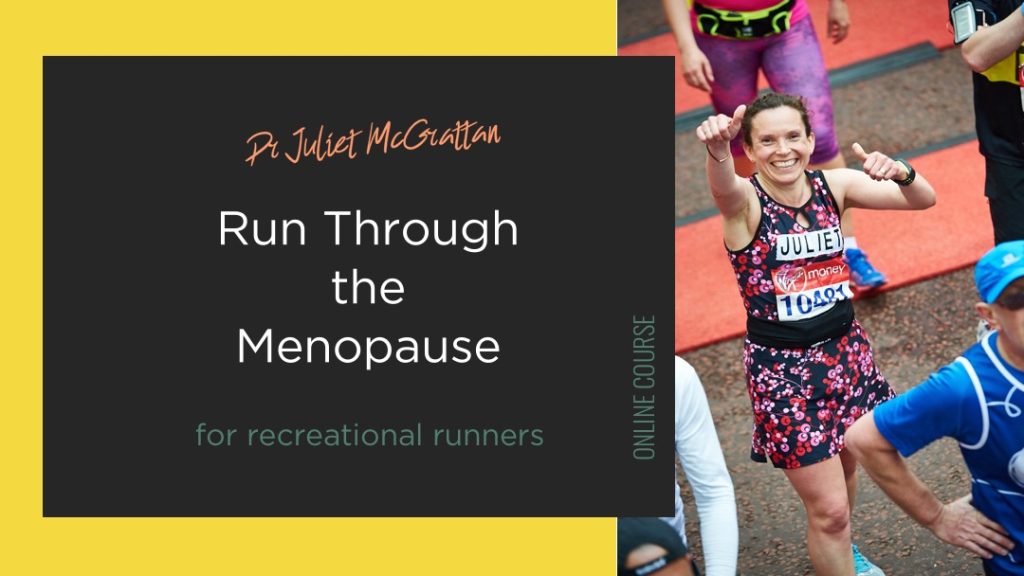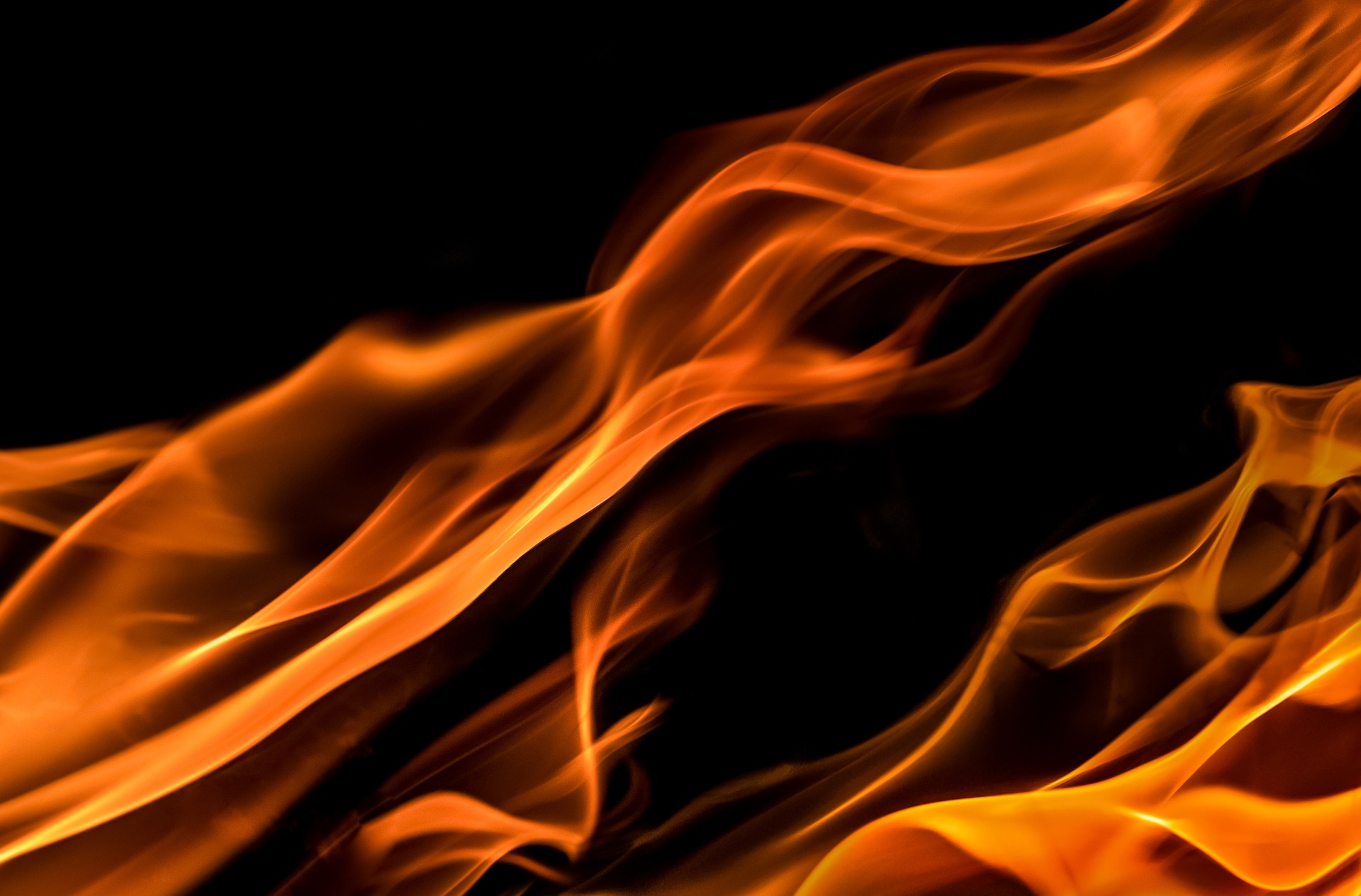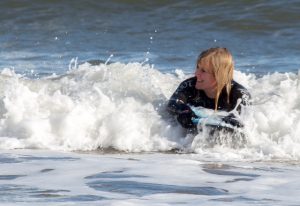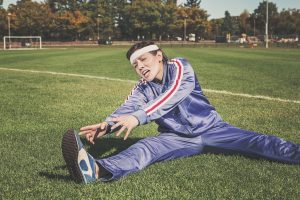Running makes you hot and sweaty that’s for sure. But what if you’re already hot and sweaty multiple times a day ( or night) thanks to the menopause? What if getting even more red faced and dripping wet is the last thing you feel like? What if you get hot sweats while you’re actually running? Running during the menopause throws up so many barriers and this is an important and challenging one. Thankfully, there is some good news and there are things you can do to help.
What actually are hot sweats?
The hypothalamus is the part of your brain which controls your body temperature. It’s your thermostat. It tries its best to maintain a nice even body temperature at your core so all your body processes can happen at their optimum.
When the hypothalamus senses core body temperature is rising it starts a cascade of events to cool you down. These include making you sweat (when sweat evaporates off the skin it takes heat with it) and flushing of your skin (blood loses heat to the outside when it travels in the superficial blood vessels). You might also feel your heart rate and breathing rate increase too. It’s pretty clever when you think about it. BUT during the perimenopause, when oestrogen levels fluctuate and fall, the hypothalamus seems to get more sensitive to changes in body temperature. The amount of blood flow in the brain reduces during a hot flush. The ins and outs of this aren’t yet fully understood but what’s clear is that the sensation of heat rising from your feet upwards, the overwhelming feeling of over heating and the excessive sweating that results is unpleasant and at times debilitating.
You might like to read two of my recent blogs for more information:
Why is my face so red when I run?
Why do I sweat so much when I run?
How hot flushes affect runners
If you’re a runner experiencing hot flushes it might be making your running hard for you in a number of ways:
- Dehydration – lots of sweating (hot flushes and night sweats included) can mean you’re dehydrated which have a knock on effect to your running performance.
- Poor sleep – the perimenopause can affect your sleep, regardless of whether you’re waking with night sweats. That makes recovery harder and energy levels low.
- Temperature control – your usual choice of running kit just isn’t working for you. You’re too hot then too cold and can’t get it right, regardless of the weather!
- You don’t want to go! – getting hot and sweaty when you’re already hot and sweaty isn’t appealing and having a hot flush while you run is unpleasant.
What’s the good news?
There is some good news for perimenopausal runners. Active women tend to suffer less from the symptoms of the menopause than those who are inactive. While some studies have shown no improvement or in some cases, a worsening of hot flushes with exercise, there is growing evidence that exercise itself can reduce the frequency and intensity of hot flushes. This may be particularly the case if you are improving your fitness. When you get fitter you boost your body’s ability to regulate its temperature and boost brain and skin circulation, making your body more efficient at losing heat. It’s definitely worth keeping going and even stepping up your fitness level to see if it helps. Sudden, intermittent bursts of high impact exercise might make things worse but a regular habit of sustained, longer duration exercise such as running is thought to be most beneficial.
What can you do about hot flushes and running?
It’s impossible to predict how long you’ll be bothered by hot flushes. Some women have them for a few months and others have them for many years. But, as a runner, there are a few tips you can follow to try to minimise the impact they have on your hobby:
Keep hydrated. If you’re a heavy sweater, you might always be a bit dehydrated so avoid being on the dry side by getting into the habit of drinking a glass of water when you wake up in the morning. It will counteract fluid lost during night sweats. Drink frequently on and off through the day and especially before and after training.
Avoid triggers. Certain things such as alcohol, caffeine and spicy foods can trigger hot flushes. Stress can do this too but that can be harder to avoid. It’s worth seeing if there’s any pattern to yours and if there’s anything you can change in your lifestyle.
Go for layers. Become the master of layering your running kit. You might need to put layers on and off several times during a long run to feel comfortable. It’s possible you have completely changed what you now wear and find yourself in a running vest when you were previously in double thermal base layers! Be flexible and adjust to what feels right for you, ignore what everyone else is wearing.
Cool your core. You can take steps to keep your core cool which might help stop the cooling mechanisms activating. Choose cooler days, times and shadier routes; it’s often colder at altitude. Windy days can make running harder but might become your favourite as they cool you down more. An iced drink before you run (this is called pre-cooling) can help and consider a small water spray to spritz your face while you run. A hat will keep the sun off your head but if you prefer to have that exposed to help lose heat then try a visor which will just keep it off your face.
Consider HRT. Whether or not you use HRT is a personal choice and needs a good discussion with your doctor about the pros and cons for your personal situation. But, if it’s suitable for you and you want to take it, it can be an extremely effective way to reduce hot flushes. For some women this is life changing, for others it just makes things a bit more bearable. There are alternatives to HRT too that can reduce flushes such as SSRIs, clonidine and gabapentin. All of these options should be discussed with your doctor. Take care with complementary therapies and supplements. Do your homework about what exactly you are taking. Always buy from a reputable source and if you are on other medications then discuss your plan with your pharmacist. Head to Menopause Matters for advice and guidance on using alternative therapies.
The perimenopause is certainly a challenging time. I have an online Run Through the Menopause course which might be just the thing you need if you’re finding the menopause is adding extra challenges to your running. You can find all the info you need here. Come and join me!

Featured Image by Rudy and Peter Skitterians from Pixabay








2 Comments